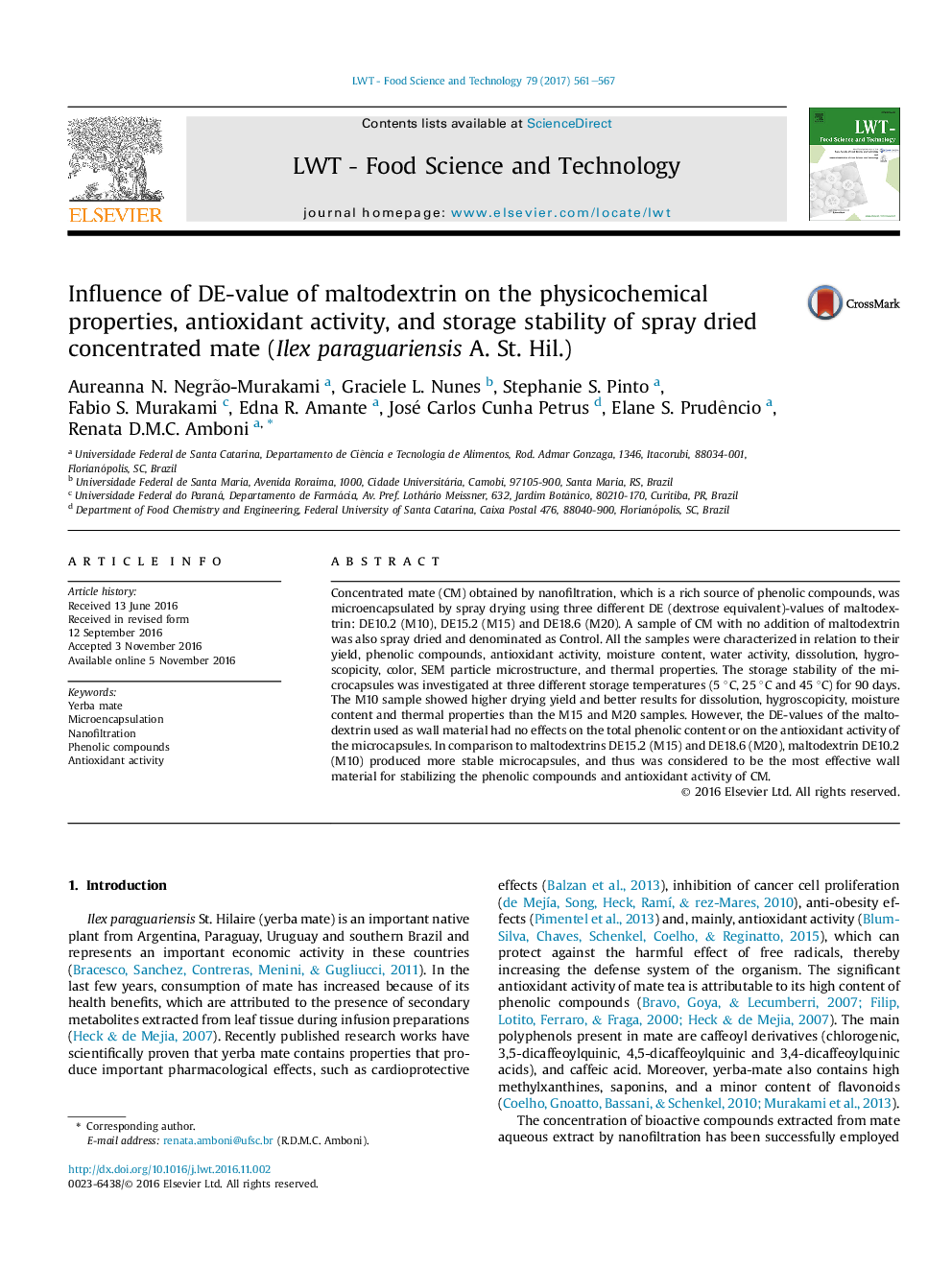| کد مقاله | کد نشریه | سال انتشار | مقاله انگلیسی | نسخه تمام متن |
|---|---|---|---|---|
| 5768807 | 1628519 | 2017 | 7 صفحه PDF | دانلود رایگان |

- All encapsulated systems were more stable than the free extract at all conditions.
- The maltodextrin increased the stability of the phenolic compounds during storage.
- Maltodextrin DE10.2 (M10) produced more stable microcapsules.
- The most adequate temperature for storage of powders with maltodextrin was 5 °C.
Concentrated mate (CM) obtained by nanofiltration, which is a rich source of phenolic compounds, was microencapsulated by spray drying using three different DE (dextrose equivalent)-values of maltodextrin: DE10.2 (M10), DE15.2 (M15) and DE18.6 (M20). A sample of CM with no addition of maltodextrin was also spray dried and denominated as Control. All the samples were characterized in relation to their yield, phenolic compounds, antioxidant activity, moisture content, water activity, dissolution, hygroscopicity, color, SEM particle microstructure, and thermal properties. The storage stability of the microcapsules was investigated at three different storage temperatures (5 °C, 25 °C and 45 °C) for 90 days. The M10 sample showed higher drying yield and better results for dissolution, hygroscopicity, moisture content and thermal properties than the M15 and M20 samples. However, the DE-values of the maltodextrin used as wall material had no effects on the total phenolic content or on the antioxidant activity of the microcapsules. In comparison to maltodextrins DE15.2 (M15) and DE18.6 (M20), maltodextrin DE10.2 (M10) produced more stable microcapsules, and thus was considered to be the most effective wall material for stabilizing the phenolic compounds and antioxidant activity of CM.
Journal: LWT - Food Science and Technology - Volume 79, June 2017, Pages 561-567